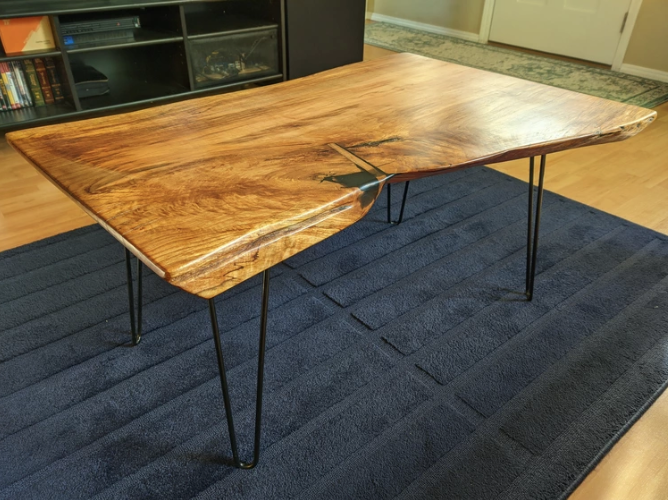Thanks for this explanation!
jasparagus
Much appreciated :)
This is phenomenal, and must have taken a ton(e) of effort... ba-dum-tss.
handy in hiding the crimes I committed
LOL. I think we all need some crime-hiding metal on our various builds. Another plug for the classic exchange:
"Just put the bad side against the wall."
"I don't have that many walls in my house."
Alright @[email protected] -- I finally got it posted. I think a question mark(?) or something was angering the gods of lemmy. Here it is: Imgur Coffee Table Build/Etc.

The fediverse is your oyster!
I absolutely love Foundry. I've been running a D&D game in it for a few years, and it blew Roll20 out of the water when we switched. Dynamic lighting, walls, and lots of little nice features make it great to use. The 5e system is good in FVTT, but it pales in comparison to Pathfinder 2e. I think a lot of that is due to the licensing differences, but I can't say for sure. As an example, if a spell has an effect (bonus, penalty), a card appears in the chat and you can drag the effect onto your character token. The bonus will become active, and it'll affect rolls, etc. Same thing for stuff like blinded. Basically, all the annoying-to-track things just work automatically out of the box. Every rule and creature is in there, and it's all coded smartly.
At this point, having played 5e live (no VTT) as well as in Roll20 and in Foundry, and PF2e in Foundry, I think I definitely prefer Foundry, and would use it even for future in-person games. It's just massively easier to prep and track stuff as a GM, and nicer for ability management as a player.
Completely off topic, but I named my bicycle stormageddon. Is your username a Doctor Who reference, or this movie, which... apparently also exists lol.
I played with friends, so I started with some basic ideas of what the world was like, and built out a starter "mini" quest that could tie into a lot of different things. I then built the rest of the world around their characters' backstories and what the players seemed most interested in as we played through the first bits. I was able to trust that they'd stick around, which helped a lot.
The analogy I've heard (a lot of times) is that GM-ing is driving a car while building it. The further along things got, the more detail I'd flesh out, especially for story stuff. For characters that show up once, I give them a basic reason to exist, and if the players take interest, I flesh them out and make sure there's an opportunity to meet/work with(against) them again. For worldbuilding, I tend to focus on various characters (enemies or allies), and the find a few opportunities for players to interact with whatever those enemies or allies are trying to accomplish. That tends to lead to major set-pieces/plotpoints pretty naturally.
Thanks for the suggestion! I'll look into it for some future projects. I'm sure Project Farm has a video comparing adhesive performance somewhere haha.
Also, I saw the oxytocin art you posted - it's awesome!
Well howdy neighbor (I'm in Oregon)! I, too, sanded my arms off before switching to a hand plane that I set up as a scrub plane. It was kind of mind-blowing how much faster and easier it was, but I of course didn't figure that out until I'd also tried a belt sander and random orbital sander for days... live and learn lol.
I'll put together a post for the coffee table (or dig up my reddit/imgur one) and share it here, and I'll tag you, assuming I can figure out how to do so.
Definitely! I love reading reviews like yours.